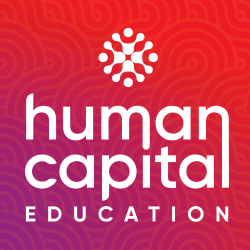Competency-based education, in concept, is not new. The idea that students have to demonstrate certain competencies before being able to move on can exist in traditional semester-long classes that are catalogued with traditional credits and paid for under traditional financial aid policies. The type of competency-based education that has captured the minds of educators in recent years, however, is self-paced. It discards the course, the credit hour, and the semester, depending on direct assessments to gauge student learning.
The U.S. Department of Education has only approved a handful of schools’ direct assessment programs for federal financial aid. But hundreds of schools are reportedly developing their own competency-based programs, hoping to break into the market.
Brandman University, in Irvine, CA, and the University of Wisconsin system both have direct assessment financial aid and programs that are now enrolling students. Brandman offers a bachelor’s in business administration through MyPath. The UW Flexible Option gives students a way to complete three certificate programs, an associate of arts and science, and a bachelor of science in three different fields.
Aaron Brower, provost and vice chancellor at University of Wisconsin Extension, says everything about the student experience is different with the competency-based options. Extension has been handling the logistics needs for the entire UW system, making it possible for all 26 campuses to offer the programs to hundreds of thousands of students.
“When you take away credits and courses and semesters as sort of the containers for what students are going through, you have to re-create the whole thing,” Brower said.
Read the first three of five key elements of two of the nation’s earliest CBE programs, broken up into two parts.
Create new systems
Recruitment, admissions, financial aid, student tracking, and transcripts are among the processes that need an overhaul in the switch to competency-based programs. Both Brandman and the University of Wisconsin looked for new technology to enable their innovation. At Brandman, middleware got them a functional alternative.
The middleware solution works with their Flat World learning management system, as well as the Banner student information system. Processing students for enrollment, tracking tuition, awarding transcripts, and monitoring faculty-student interaction is all automated.
“Sometimes folks just look at the learning management system, but there is more to it,” said Gary Brahm, chancellor of Brandman.
At the University of Wisconsin Brower said they have cobbled together a number of solutions, including D2L’s learning management system and Peoplesoft. As vendors figure out how to respond to the higher education market’s exploding demand for competency-based education tools, Brower is encouraging vendors to stop trying to create all-encompassing solutions. He prefers a standard database that modules for financial aid, recruitment, and tuition billing could all plug into. As processes evolve, then, single modules can be taken out, altered and replaced without requiring an overhaul to the entire system.
Consider adaptive learning
Competency-based education programs necessarily occur almost entirely online. Students demonstrate existing knowledge at the start of one competency and then work through areas they have not mastered until they can move on to another competency. Depending on the program, students must prove mastery with traditional tests, capstone projects, or papers.
At Brandman, all of the program content is embedded in Flat World. That means students save money on textbooks, for one, but it also facilitates adaptive learning. Brahm said 40% of the competencies across four emphasis areas of its bachelor’s in business administration are adaptive. This makes it so students don’t even see content they already know, after taking a placement test of sorts. Brandman has found that to be a more compelling experience for students that motivates them to move more quickly through the content.
Be thorough and manage expectations
The demand for competency-based education should not be seen as an excuse to rush the development process. CBE requires an overhaul of the traditional higher education process when it comes to teaching and learning as well as the systems that support them.
“There’s a lot to learn and so I think it’s important that institutions spend their time learning as much as possible, check out as many platforms as possible, as they go forward,” Brahm said.
The collaborative environment in higher education offers those administrators new to CBE access to intel about what worked and what didn’t as they think about their own programs. Brower keeps a blog at The evoLLLution to answer some of the common questions he gets from his peers.
One key piece of advice he has for CBE program developers is to manage expectations among board members and other college or university leaders.
“To do this right it’s a lot of work and planning,” Brower said. “You can’t just be another university that says ‘I see that Wisconsin is doing that, get right on that and get that going by next fall.”
Brahm and Brower encourage their colleagues to have the courage to proceed with CBE, but to do so thoughtfully, with quality in mind.
Accreditor and department approval
There are reportedly more than 600 schools with competency-based education programs enrolling students or in development. The regulatory environment may have some schools taking a step back as accreditors and the Department of Education get in sync. Brandman is accredited by the Western Association of Schools and Colleges, which Brahm said has been incredibly supportive of CBE. Beyond the bachelor’s in business administration, WASC has approved a bachelor of science in IT to launch early next year.
The University of Wisconsin has its accreditation through the Higher Learning Commission, which has been faulted by the Education Department’s Inspector general for not being strict enough with its definition of “regular and substantive” interaction between faculty and students. Wisconsin has benefitted from its reputation as a well-established, mainstream, high-quality player in the higher education sector. Other schools may not have the cache to do the same in the face of criticism.
For his part, however, Brower hopes the Department of Education will broaden its own definitions when it comes to competency-based education. Regular and substantive interaction is still being defined by contact that became standard when classes were scheduled at the same time every week. But in general education courses with hundreds of students, the argument that weekly lectures provide substantive faculty-student contact is precarious anyway.
“We use these proxies that were adequate for a traditional system that we all knew well but why in the world would we apply that same kind of standard to a different model?” Brower wonders.
Feedback along the path to mastering competencies could be regular and substantive for students in a CBE program, but unless accreditors and the federal government both get on board with new definitions, schools will not be able to offer the programs.
Financial aid, too, creates a challenge for program development. Students are only allowed to continue receiving aid if they are making consistent progress toward their degrees. When traditional categories like full-time and part-time student don’t fit, schools have to figure out ways to demonstrate progress.
At the University of Wisconsin, each student gets an independent learning plan, set up with their educational goals in mind. Benchmarks are then built in and monitoring systems make sure financial aid reflects the student’s pace. This is an area ripe for fraud, which is why the department is proceeding so cautiously in approving additional programs.
A time for bold innovation
While the renewal of the Higher Education Act could provide some clarity on the regulatory front, some colleges may be tempted to pull back, in the meantime. Brower does not recommend that. He advises fellow administrators to be explicit about what they are doing and carry on with innovation that helps expand higher education access to the working adults whose lives demand flexible schedules.
“When you’re kind of breaking new ground, there has to be a lot of people doing a lot of different things and it’s over time that you coalesce to a set of standards that make good sense,” Brower said. “If you control it too much on the front end, I’ve never seen it go too well. Because you can get it wrong and then everyone follows that wrong lead for awhile before they find something better.”
Elected officials are clamoring for expanded access in higher education and improved outcomes. Competency-based education gives students a greater chance of success if rigid schedules were holding them back. For those who do not want to sit through courses they do not need or already have the skills to master, CBE gives them a more direct path to a degree. And along the way, at Brandman, students can earn badges based on individual competencies before they even have a diploma in hand.
With a skills gap and high unemployment, the time for innovative new programs to better serve prospective students is now.
Would you like to see more education news like this in your inbox on a daily basis? Subscribe to our Education Dive email newsletter! You may also want to read Education Dive's look at how cloud transitions are helping higher ed bridge its IT skills gap.




















